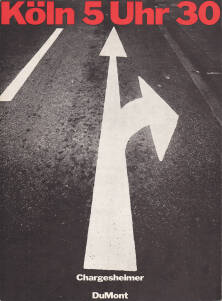The Last Conversation with Academician Sakharov (signed)
by Agnieszka Rayss
Photographs: Agnieszka Rayss
Text: Agnieszka Rayss
ISBN: 978-83-956367-5-2
Price: 33 €
Comments: Graphic design: Joanna Jopkiewicz, Translation: Stefan Lorenzutti & Joanna Osiewicz-Lorenzutti.
Agnieszka Rayss traced the remains of a Soviet nuclear test site in Northern Kazakhstan. This particular site was known as the Polygon, and was one of the main areas for the nuclear programme of the Soviet Union. Until 1989, when the site was closed, over 450 detonations were carried out in about 40 years. Even today, many locals suffer because of the radioactive contamination that has been found in soil, food, and water. The small town Semipalatinsk 21 was built to manage the scientific centre and the experimental areas located in the close vicinity. Nowadays, the town is renamed Kurchatov, after the Soviet nuclear physicist Igor Kurchatov, who was leading the Soviet atomic programme.
The title “The Last Conversation with Academician Sakharov” refers to a 1989 newspaper article in which an American journalist describes a meeting with Andrei Sakharov shortly before his death. As a talented nuclear physicist in the 1950s, Sakharov’s inventions led to the first Soviet thermonuclear bomb. At a later stage of the Cold War, when the threat of nuclear war was omnipresent, Andrei Sakharov became a very outspoken opponent of the arms race, and was known as a human rights activist across the world. In 1975 he was awarded the Nobel Peace Prize, but for a long time he was not allowed to leave the Soviet Union, where the communist regime considered him an enemy of the state. Rayss’s project could be seen as a dialogue with Sakharov, and touches upon the memories of this devastating period. She questions how the totalitarian state which conducted these “experiments” omitted to take responsibility for their consequences. The documents brought together give a subjective perspective on events that were visible and spectacular, but covered by strict secrecy for many years.
More books by Agnieszka Rayss
more books tagged »Eastern Europe« | >> see all
-
east - west (special offer! - 2 books)
by Regina Maria Anzenberger
Euro 112 56.00 -
The City of Brides (signed - last copy)
by Alena Zhandarova
Euro 250 -
Call Me Lola: In Search of Mother
by Loli Kantor
Euro 53
more books tagged »science« | >> see all
-
DUST (signed)
by Klaus Pichler
Euro 48 -
Finding Homer
by Eva Tomei
Euro 25 -
A hoax, a prank, an internet scam, an act of agricultural bio-...
by Klaus Pichler
Euro 49.50 -
Altered Ocean (signed)
by Mandy Barker
sold out
more books tagged »Russia« | >> see all
-
The Unknown - Russia 2003 (signed)
by Rob Hornstra
Euro 75 -
He Had A Hat (signed - last copy)
by Julia Borissova
Euro 360 -
Nomad (signed)
by Julia Borissova
Euro 160 -
NORTH LINE (signed)
by Fyodor Telkov, Sergey Poteryaev
Euro 72 -
25 weeks of winter (signed - review copy)
by Ekaterina Anokhina
Euro 45 36.00
more books tagged »Sovietunion« | >> see all
-
VALERY FAMINSKY V. 1945 (last copy)
by Valery Faminsky
sold out -
Novokuznetsk (signed)
by Nikolay Bakharev
Euro 350 -
Yerevan 1996/1997 (last copy)
by Ursula Schulz-Dornburg
sold out -
East/West
by Harry Gruyaert
sold out -
Mühit (signed - second edition - last copy)
by Ilkin Huseynov
Euro 52
more books tagged »Polish« | >> see all
-
Push The Sky Away
by Piotr Zbierski
Euro 44 -
Ne faire qu'un / To be but One (signed - last copy)
by Gabriela Morawetz
Euro 95 -
Fotografie
by Ireneusz Zjezdzalka
Euro 45 -
check out (including a vinyl)
by hornschaft
sold out -
OVER (signed)
by Kacper Kowalski
sold out -
Cry of an Echo (signed)
by Malgorzata Stankiewicz
Euro 38.50
Random selection from the Virtual bookshelf josefchladek.com
The Last Conversation with Academician Sakharov (signed)
by Agnieszka Rayss
Photographs: Agnieszka Rayss
Text: Agnieszka Rayss
ISBN: 978-83-956367-5-2
Price: 33 €
Comments: Graphic design: Joanna Jopkiewicz, Translation: Stefan Lorenzutti & Joanna Osiewicz-Lorenzutti.
Agnieszka Rayss traced the remains of a Soviet nuclear test site in Northern Kazakhstan. This particular site was known as the Polygon, and was one of the main areas for the nuclear programme of the Soviet Union. Until 1989, when the site was closed, over 450 detonations were carried out in about 40 years. Even today, many locals suffer because of the radioactive contamination that has been found in soil, food, and water. The small town Semipalatinsk 21 was built to manage the scientific centre and the experimental areas located in the close vicinity. Nowadays, the town is renamed Kurchatov, after the Soviet nuclear physicist Igor Kurchatov, who was leading the Soviet atomic programme.
The title “The Last Conversation with Academician Sakharov” refers to a 1989 newspaper article in which an American journalist describes a meeting with Andrei Sakharov shortly before his death. As a talented nuclear physicist in the 1950s, Sakharov’s inventions led to the first Soviet thermonuclear bomb. At a later stage of the Cold War, when the threat of nuclear war was omnipresent, Andrei Sakharov became a very outspoken opponent of the arms race, and was known as a human rights activist across the world. In 1975 he was awarded the Nobel Peace Prize, but for a long time he was not allowed to leave the Soviet Union, where the communist regime considered him an enemy of the state. Rayss’s project could be seen as a dialogue with Sakharov, and touches upon the memories of this devastating period. She questions how the totalitarian state which conducted these “experiments” omitted to take responsibility for their consequences. The documents brought together give a subjective perspective on events that were visible and spectacular, but covered by strict secrecy for many years.
More books by Agnieszka Rayss
more books tagged »Eastern Europe« | >> see all
-
east - west (special offer! - 2 books)
by Regina Maria Anzenberger
Euro 112 56.00 -
The City of Brides (signed - last copy)
by Alena Zhandarova
Euro 250 -
Call Me Lola: In Search of Mother
by Loli Kantor
Euro 53
more books tagged »science« | >> see all
-
DUST (signed)
by Klaus Pichler
Euro 48 -
Finding Homer
by Eva Tomei
Euro 25 -
A hoax, a prank, an internet scam, an act of agricultural bio-...
by Klaus Pichler
Euro 49.50 -
Altered Ocean (signed)
by Mandy Barker
sold out
more books tagged »Russia« | >> see all
-
The Unknown - Russia 2003 (signed)
by Rob Hornstra
Euro 75 -
He Had A Hat (signed - last copy)
by Julia Borissova
Euro 360 -
Nomad (signed)
by Julia Borissova
Euro 160 -
NORTH LINE (signed)
by Fyodor Telkov, Sergey Poteryaev
Euro 72 -
25 weeks of winter (signed - review copy)
by Ekaterina Anokhina
Euro 45 36.00
more books tagged »Sovietunion« | >> see all
-
VALERY FAMINSKY V. 1945 (last copy)
by Valery Faminsky
sold out -
Novokuznetsk (signed)
by Nikolay Bakharev
Euro 350 -
Yerevan 1996/1997 (last copy)
by Ursula Schulz-Dornburg
sold out -
East/West
by Harry Gruyaert
sold out -
Mühit (signed - second edition - last copy)
by Ilkin Huseynov
Euro 52
more books tagged »Polish« | >> see all
-
Push The Sky Away
by Piotr Zbierski
Euro 44 -
Ne faire qu'un / To be but One (signed - last copy)
by Gabriela Morawetz
Euro 95 -
Fotografie
by Ireneusz Zjezdzalka
Euro 45 -
check out (including a vinyl)
by hornschaft
sold out -
OVER (signed)
by Kacper Kowalski
sold out -
Cry of an Echo (signed)
by Malgorzata Stankiewicz
Euro 38.50
Random selection from the Virtual bookshelf josefchladek.com
The Last Conversation with Academician Sakharov (signed)
by Agnieszka Rayss
Photographs: Agnieszka Rayss
Text: Agnieszka Rayss
ISBN: 978-83-956367-5-2
Price: 33 €
Comments: Graphic design: Joanna Jopkiewicz, Translation: Stefan Lorenzutti & Joanna Osiewicz-Lorenzutti.
Agnieszka Rayss traced the remains of a Soviet nuclear test site in Northern Kazakhstan. This particular site was known as the Polygon, and was one of the main areas for the nuclear programme of the Soviet Union. Until 1989, when the site was closed, over 450 detonations were carried out in about 40 years. Even today, many locals suffer because of the radioactive contamination that has been found in soil, food, and water. The small town Semipalatinsk 21 was built to manage the scientific centre and the experimental areas located in the close vicinity. Nowadays, the town is renamed Kurchatov, after the Soviet nuclear physicist Igor Kurchatov, who was leading the Soviet atomic programme.
The title “The Last Conversation with Academician Sakharov” refers to a 1989 newspaper article in which an American journalist describes a meeting with Andrei Sakharov shortly before his death. As a talented nuclear physicist in the 1950s, Sakharov’s inventions led to the first Soviet thermonuclear bomb. At a later stage of the Cold War, when the threat of nuclear war was omnipresent, Andrei Sakharov became a very outspoken opponent of the arms race, and was known as a human rights activist across the world. In 1975 he was awarded the Nobel Peace Prize, but for a long time he was not allowed to leave the Soviet Union, where the communist regime considered him an enemy of the state. Rayss’s project could be seen as a dialogue with Sakharov, and touches upon the memories of this devastating period. She questions how the totalitarian state which conducted these “experiments” omitted to take responsibility for their consequences. The documents brought together give a subjective perspective on events that were visible and spectacular, but covered by strict secrecy for many years.
More books by Agnieszka Rayss
more books tagged »Eastern Europe« | >> see all
-
east - west (special offer! - 2 books)
by Regina Maria Anzenberger
Euro 112 56.00 -
The City of Brides (signed - last copy)
by Alena Zhandarova
Euro 250 -
Call Me Lola: In Search of Mother
by Loli Kantor
Euro 53
more books tagged »science« | >> see all
-
DUST (signed)
by Klaus Pichler
Euro 48 -
Finding Homer
by Eva Tomei
Euro 25 -
A hoax, a prank, an internet scam, an act of agricultural bio-...
by Klaus Pichler
Euro 49.50 -
Altered Ocean (signed)
by Mandy Barker
sold out
more books tagged »Russia« | >> see all
-
The Unknown - Russia 2003 (signed)
by Rob Hornstra
Euro 75 -
He Had A Hat (signed - last copy)
by Julia Borissova
Euro 360 -
Nomad (signed)
by Julia Borissova
Euro 160 -
NORTH LINE (signed)
by Fyodor Telkov, Sergey Poteryaev
Euro 72 -
25 weeks of winter (signed - review copy)
by Ekaterina Anokhina
Euro 45 36.00
more books tagged »Sovietunion« | >> see all
-
VALERY FAMINSKY V. 1945 (last copy)
by Valery Faminsky
sold out -
Novokuznetsk (signed)
by Nikolay Bakharev
Euro 350 -
Yerevan 1996/1997 (last copy)
by Ursula Schulz-Dornburg
sold out -
East/West
by Harry Gruyaert
sold out -
Mühit (signed - second edition - last copy)
by Ilkin Huseynov
Euro 52
more books tagged »Polish« | >> see all
-
Push The Sky Away
by Piotr Zbierski
Euro 44 -
Ne faire qu'un / To be but One (signed - last copy)
by Gabriela Morawetz
Euro 95 -
Fotografie
by Ireneusz Zjezdzalka
Euro 45 -
check out (including a vinyl)
by hornschaft
sold out -
OVER (signed)
by Kacper Kowalski
sold out -
Cry of an Echo (signed)
by Malgorzata Stankiewicz
Euro 38.50
Random selection from the Virtual bookshelf josefchladek.com

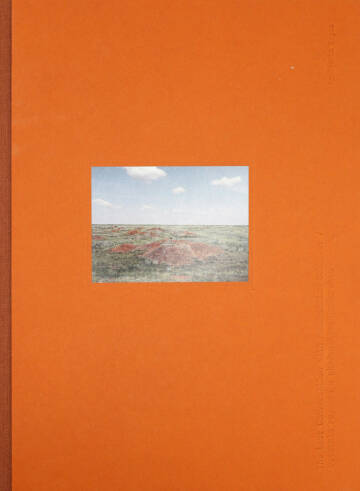





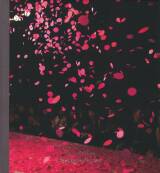























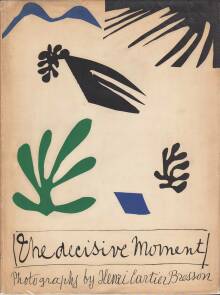
;jpg?c=8c505814bb215507267c04b84d48d520)
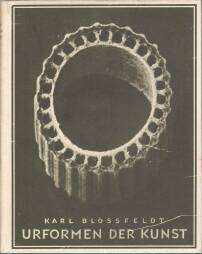

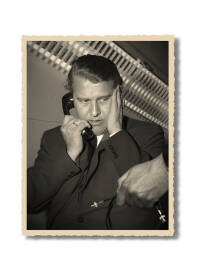




;jpg?c=480a4902eea6385f6b3949426b14a6cd)
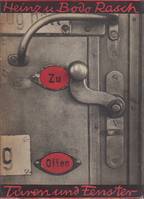
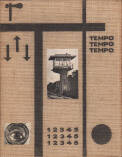

;jpg?c=bcddb633abe4546454951151be783ccf)
